Ready Set Study

How to Study Powerpoint Slides: Effective Techniques and Tips
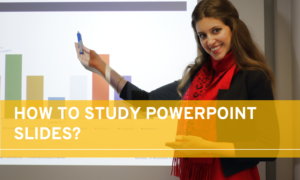
PowerPoint slides serve as an essential tool for presenting and understanding complex topics. With a plethora of information contained within them, it’s crucial to approach studying these slides in a methodical and efficient manner. By mastering the techniques on how to study PowerPoint slides, learners can enhance retention, comprehension, and ultimately, their academic performance.
One significant aspect of studying PowerPoint slides is finding the right methods for assimilating information. Adopting a combination of active learning techniques, note-taking strategies, and consistent reviewing is key to maximizing the benefits of using PowerPoint slides. Moreover, learners should be mindful of their study environment, striking a balance between the workload and time allocation for more effective learning.
Table of Contents
Key Takeaways -How to Study PowerPoint Slides
- Implementing efficient study techniques enhances learning from PowerPoint slides
- Utilizing a mix of note-taking strategies and active learning fosters better comprehension
- Finding the ideal study environment and balancing workload contribute to overall academic success.
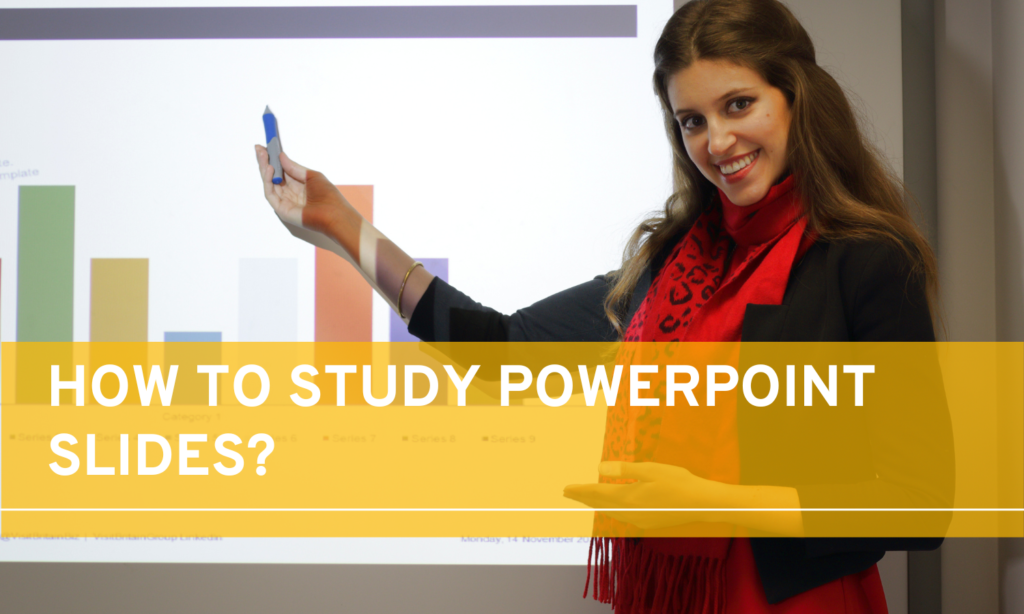
Importance of Proper Studying Habits
Developing proper studying habits is essential for anyone who wants to succeed academically. Effective study habits help students keep up with coursework, retain information, and perform well on exams. It’s crucial to find a study technique that works best for each individual.
One key aspect of effective studying is setting specific goals for study sessions. This helps students stay focused and make the most of their time. To achieve this, experts recommend studying at the same time each day to create a consistent routine. This consistency allows the brain to establish a study pattern, making it easier to retain information.
Additionally, it is essential to focus on assignments or materials that are the most difficult first . Tackling challenging topics early on when the mind is fresh helps students better understand them. Afterward, reviewing notes can solidify the newly acquired knowledge. Another useful technique is to keep a record of study sessions , which allows students to track their progress and refine their study habits over time.
Some effective strategies to consider when mastering slide-based content like PowerPoint presentations include:
- Previewing the entire presentation before diving into the details
- Taking notes while going through the slides
- Summarizing each slide in one or two sentences
- Creating flashcards for key concepts in the presentation
- Repeatedly reviewing the material over time.
Establishing a dedicated study environment can also play a significant role in improving study habits. Eliminate distractions and create a comfortable, quiet space where you can fully focus on your study materials.
In conclusion, proper studying habits are crucial for academic success. By setting specific goals, sticking to a consistent routine, prioritizing difficult materials, and creating an ideal study environment, students can develop effective study techniques that will help them excel in their courses.
Choosing the Correct Environment
When it comes to studying PowerPoint slides, creating the right environment can significantly impact your success. Several factors contribute to a productive study space that allows you to remain focused and efficiently absorb the information on the slides.
Factors Influencing a Good Study Environment
Quietness: A quiet study area helps minimize distractions and allows you to concentrate better. Choose a location with minimal noise levels, such as a library or a dedicated study room.
Comfort: While studying, it’s essential to be comfortable, but not too relaxed that you become sleepy. Ensure that your chair provides adequate support and adjust the desk height to prevent strain and discomfort.
Lighting: Proper lighting is crucial for effective learning. Choose a space with ample natural light or equip your study area with lamps that illuminate the room without causing a glare on your computer screen.
Organization: Keep your study area free of clutter and maintain a clean workspace. This helps create a sense of calmness and keeps your focus on the task at hand.
Accessibility: Ensure that all the necessary resources, such as textbooks, notes, and your computer, are within reach to prevent distractions or interruptions caused by searching for materials while studying.
Temperature & Ventilation: A well-ventilated space with a comfortable temperature is essential for maintaining focus and concentration. Avoid rooms that are too hot or cold, as these conditions can make it difficult to remain attentive.
By considering these factors, you can create a conducive environment that maximizes your ability to effectively study PowerPoint slides and retain the information presented.
Understanding PowerPoint Slides
Recognizing key points.
When studying PowerPoint slides, it is crucial to identify the key points and organize them in a structured manner. Look for patterns in the organization of the slides, such as the use of bullet points, numbered lists, or bolded text. These elements often highlight important information. In addition, pay attention to headings and subheadings, as they can help you understand the main topics being discussed.
Interpreting Graphics and Charts
PowerPoint slides often include graphics and charts to convey complex data or concepts. It is important to interpret these visual elements accurately. To do this, read the titles, labels, and legends carefully. Additionally, observe any trends or patterns in the data displayed, such as increases, decreases, or fluctuations over time.
When studying charts and graphics, try to summarize the main idea or conclusion drawn from the data. This will help you to better comprehend the material and retain the information. Overall, being able to recognize key points and interpret graphics and charts is essential for effectively studying PowerPoint slides.
How to study lecture slides?
In order to effectively study lecture slides in English, it is crucial to employ certain strategies. Firstly, the student should allocate sufficient time to thoroughly review the slides, taking note of key points and concepts.
Additionally, it is advisable to create organized summaries or outlines of the material to enhance comprehension and retention.
Furthermore, active engagement with the content can be achieved by posing questions and seeking answers within the slides, or by discussing the material with classmates.
Another useful technique is to supplement the slides with additional resources, such as textbooks, articles, or online materials that provide further explanations or examples.
Finally, regular review sessions should be scheduled to reinforce the understanding of the lecture slides, ensuring the information is retained in the long term.
By adopting these effective study methods, individuals can enhance their grasp of lecture slides in English and improve their overall academic performance.
Note-Taking Strategies
Summarizing information.
One effective note-taking strategy for studying PowerPoint slides is summarizing the information presented on each slide. This helps break down complex concepts into more accessible, bite-sized pieces. Start by identifying the main idea or topic of each slide, and then write a brief summary in your own words. This not only helps you better understand the material but also improves recall later on.
When summarizing, feel free to use:
- Bullet points to list the key points or concepts.
- Italics or bold text to emphasize important terms or ideas.
- Short sentences, focusing on the essence of each slide.
Visualizing with Diagrams
Another useful approach to enhance your understanding of PowerPoint slides is visualizing the content using diagrams. Visual aids, such as mind maps, flowcharts, and Venn diagrams, can help you see the relationships among different concepts or topics.
To create a diagram, consider the following steps:
- Identify the central idea or theme of the section.
- Determine the subtopics or related concepts.
- Organize the information hierarchically or chronologically.
- Use shapes, colors, and lines to distinguish different elements and connections.
By incorporating these note-taking strategies, you can significantly improve your ability to study and comprehend PowerPoint slides. Remember, the key to effective learning is engaging with the material, so find what works best for you and adapt your approach accordingly.
Active Learning Techniques
Self-quizzing.
One effective method to study PowerPoint slides is through self-quizzing. This technique involves creating questions based on the content of the slides to test your understanding of the material. Transform key points and concepts on each slide into questions and try to answer them without referring back to the slides. Once you have completed the quiz, check your answers and review any slides where your understanding was incorrect or incomplete. This process not only helps to reinforce the material but also enhances your critical thinking and problem-solving skills.
Explaining Concepts Out Loud
Another powerful active learning technique is explaining concepts out loud. By narrating the information from the PowerPoint slides, you can better internalize and process the subject matter. Start by summarizing the general idea of a slide, and then delve into specific details, examples, or applications of that concept. This process of verbalizing the content allows you to identify any gaps in your knowledge and can provide valuable feedback on your comprehension. Remember to engage with the material actively by asking questions, making connections, and offering examples. In doing so, you can develop a deeper understanding of the topic and enhance your retention of the information.
Consistent Reviewing
Arranging regular study sessions.
One effective approach to studying PowerPoint slides is to arrange regular study sessions. By dedicating consistent periods, students can enhance their learning experience over time. Some suggested strategies for arranging consistent study sessions include:
- Scheduling study sessions at the same time every day
- Setting specific goals for each study session
- Focusing on the most challenging materials first
- Reviewing notes before starting a study session
These practices help ensure that students have ample time to absorb and understand the contents of PowerPoint presentations.
Revising Notes Regularly
Revising notes taken during class or from PowerPoint presentations is an important part of the learning process. Regular note revision can help students in the following ways:
- Reinforces key concepts and ideas
- Allows for identification and correction of errors or inaccuracies
- Assists in noticing patterns and relationships between topics
- Facilitates memory retention and recall of information
Students should aim to revise their notes regularly, preferably after each study session. This practice enables them to become more familiar with the material, better understand their strengths and weaknesses, and improve their overall learning experience.
By combining regular study sessions and consistent note revision, students can effectively study and retain knowledge from PowerPoint presentations. Integrating these strategies into their study routines will lead to a more successful academic experience.
Balancing Time and Workload
Dividing work into manageable parts.
It is important to break down large PowerPoint presentations into smaller, more manageable sections. This technique, sometimes called “chunking”, helps to prevent information overload and allows for a more focused approach to studying. To do this, identify the main topics within the PowerPoint and separate them into logical chunks. Next, create a study schedule allocating a dedicated time slot to work on each section individually. This way, the entire PowerPoint can be systematically tackled without feeling overwhelmed.
Setting Achievable Goals
Setting specific, achievable goals during the study process can help to maintain motivation and foster a sense of accomplishment. When studying PowerPoint slides, these goals can be related to the understanding of key concepts or completion of certain sections. Here are some tips to set achievable goals:
- Define your objectives clearly: Identify the main concepts, themes, or knowledge that you intend to acquire from the PowerPoint.
- Be realistic: Set goals that are challenging, yet achievable within the given timeframe and resources.
- Track your progress: Regularly assess your progress against the goals set and adjust as necessary.
- Stay flexible: Be prepared to revise your goals should circumstances change, or new information emerges that alters your understanding of the topic.
By dividing work into manageable parts and setting achievable goals, the process of studying PowerPoint slides can become more efficient and enjoyable, ultimately leading to a higher understanding of the material.
How to memorize lecture slides?
In order to memorize lecture slides in English, one should utilize effective techniques and strategies. These methods can assist individuals in retaining important information from educational presentations.
A beneficial approach involves actively engaging with the material by taking thorough notes while listening attentively to the lecturer.
Additionally, creating visual aids, such as concept maps or diagrams, can aid in memorization and comprehension. Besides, breaking the lecture slides into smaller, manageable chunks can enhance retention capacity.
It is also advantageous to review the slides repeatedly, preferably in spaced intervals, to reinforce information in one’s memory. Moreover, practicing active recall by mentally retrieving the key points from the lecture slides can solidify understanding.
Lastly, seeking clarification or additional resources from professors or classmates can contribute to a comprehensive grasp of the lecture content. By utilizing these helpful techniques, individuals can effectively memorize lecture slides in English.
In conclusion, studying PowerPoint slides effectively requires a strategic approach and the implementation of various techniques. One such technique involves pre-studying PowerPoints to familiarize yourself with the material and better understand the structure of the presentation.
To get the most out of your study sessions, consider the following tips, presented in a clear and knowledgeable manner:
- Organize your slides : Keep your slides well-organized with clear titles, headings, and topics. This will help you navigate through the content with ease and ensure you don’t miss any important information.
- Take notes : Jot down key points and insights while studying the slides. These notes can serve as a quick reference guide for later study sessions and help reinforce your understanding of the material.
- Test your knowledge : After going through the slides, test yourself on the information provided. Quiz yourself on key points, concepts, and examples to solidify your understanding and identify areas that may require further attention.
- Practice active learning : Engage with the content by asking questions, creating summaries, and discussing the material with others. Active learning aids in the retention of information and cultivates a deeper understanding of the material.
Lastly, using these study techniques with confidence, persistence, and patience will lead to a better comprehension of PowerPoint slides and ultimately, greater academic success.

College Nut

How to Create an Effective Study Habits PowerPoint Presentation?
Creating an effective PowerPoint presentation about study habits doesn’t have to be a daunting task. With a few simple steps, you can create an engaging presentation that will help your audience develop better study habits and improve their academic performance.
Start by incorporating visuals; using images, charts, and graphs can make your presentation compelling and easier to understand. Break up your content into smaller, manageable chunks — this will help keep your audience’s attention and make your slides easier to follow. Make sure to provide clear goals and objectives so that your audience has a solid understanding of what they need to learn from your presentation. With these tips, you can create an effective PowerPoint presentation about study habits that will leave a lasting impression!
When creating an effective Study Habits PowerPoint Presentation, it’s important to incorporate visuals. Visuals help keep your audience engaged, and they can also help illustrate a point that you are making. Utilize visuals such as graphs, charts, and images to promote understanding.
Breaking up the content into sections can help the audience process the material more easily. When presenting, clearly define goals and objectives, as this will help the audience understand what you want them to take away from the presentation.
It’s important to use a logical flow when presenting. Start by introducing the main topic and then move on to other subtopics.
When presenting, make sure to emphasize the main points and explain their significance. Review the presentation at the end to ensure that the audience learned and understood the material. By following these tips, you will be able to create an effective Study Habits PowerPoint Presentation.
Incorporating Visuals
When creating a PowerPoint Presentation on Study Habits, utilizing visuals is important for an effective presentation. Visuals help to break up the content, making it easier for the audience to digest. Visuals also help to convey information more clearly and concisely.
Examples of visuals that can be used to effectively convey information in a Study Habits presentation include charts, diagrams, infographics, and videos. When adding visuals, make sure they are properly labeled and relevant to the topic at hand.
In addition to visuals, making sure the presentation is visually appealing can also help to keep the audience engaged. Using bright, vibrant colors and fonts can help to draw the audience’s attention.
The presentation should also have a consistent aesthetic throughout, and all visuals should complement each other. To ensure the presentation looks professional, choose a template that fits the subject matter and is in line with the audience’s expectations.
Breaking Up Content
When it comes to breaking up content for your presentation, it’s important to keep in mind that too much information can be overwhelming for your audience. Try to break up your content into smaller pieces and provide short explanations for each point. Make sure to organize the content in a logical order to ensure that your audience is able to follow the thread of your presentation.
Consider using visuals, such as charts or graphs, to help illustrate the points you are making. This will help to make your presentation more engaging and more memorable.
When you write your content, try to make it as clear and concise as possible.
Think of the audience you are presenting to – they may not have prior knowledge of the subject and you should be sure to make your content as easy to understand as possible. Avoid using jargon and complex terminology, and instead focus on providing clear explanations in simple language. Try to use various forms of media, such as audio and video, to keep your audience engaged and interested. These elements will help you to create an effective and memorable PowerPoint presentation on study habits.
Providing Clear Goals and Objectives
It is important to provide clear goals and objectives in your PowerPoint Presentation on Study Habits. This will help to ensure that the presentation’s content is organized, focused and understandable.
Make sure you provide a concise list of the desired outcomes or goals that the viewers should take away from the presentation. It is also important to make sure that your objectives are realistic and achievable.
Provide examples of how the objectives can be met. This allows the viewer to understand the desired outcomes in a more concrete way. Remember that the goal of the presentation is to help the viewer create better study habits and reach their goals more efficiently.
In conclusion, studying effectively can take some time and practice. To get the most out of your presentation on study habits, incorporate visuals that engage the audience and break up the content into manageable chunks. Make sure to provide clear objectives or goals that you want to achieve.
By following these steps, you can create a PowerPoint presentation that will help you to effectively share your knowledge, engage the audience and reach your desired goals. Utilizing visuals, breaking up the content and providing clear objectives are key for creating a successful study habits PowerPoint presentation.
Visuals can be used to keep the audience engaged, content should be broken up into smaller, manageable chunks and objectives should be clear and achievable.
With these three things in mind, you will be well on your way to creating an effective and successful presentation. Creating a PowerPoint presentation on study habits can be a challenging task. With a little research, planning, and practice you can create an effective and successful presentation. Utilize visuals, break up the content into easily digestible chunks, and provide clear objectives or goals and you will be sure to create an effective and successful PowerPoint presentation.
Visit azslides.com to watch the latest Powerpoint Templates and Google slides themes. Save the link on your browser.
Press ESC to close
Study habits, study habits presentation.
Free Google Slides theme and PowerPoint template
Creating a PowerPoint presentation about study habits can be a valuable resource for students looking to improve their academic performance. Here’s a suggested outline for a study habits PowerPoint presentation:
Leave a Reply Cancel reply
Save my name, email, and website in this browser for the next time I comment.
Share Article:
Related presentations

Area and Perimeter of Rectangles

Reading Closely and Analyzing Text

An Introduction to Types of Waves
Study Habits

How to download the Study Habits template for Powerpoint
How to download the template study habits in google slides, description.

Jewish Traditions and Heritage
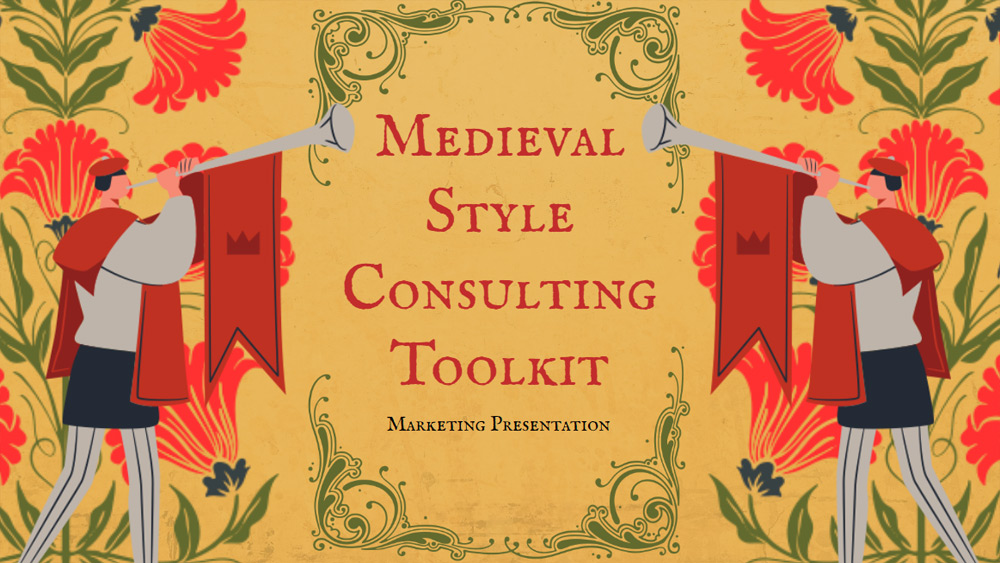
Medieval-Themed Consulting Toolbox

Interactive St. Paddy's Day Memory Challenge

- My presentations
Auth with social network:
Download presentation
We think you have liked this presentation. If you wish to download it, please recommend it to your friends in any social system. Share buttons are a little bit lower. Thank you!
Presentation is loading. Please wait.
To view this video please enable JavaScript, and consider upgrading to a web browser that supports HTML5 video
Effective Study Habits
Published by Modified over 8 years ago
Similar presentations

Presentation on theme: "Effective Study Habits"— Presentation transcript:
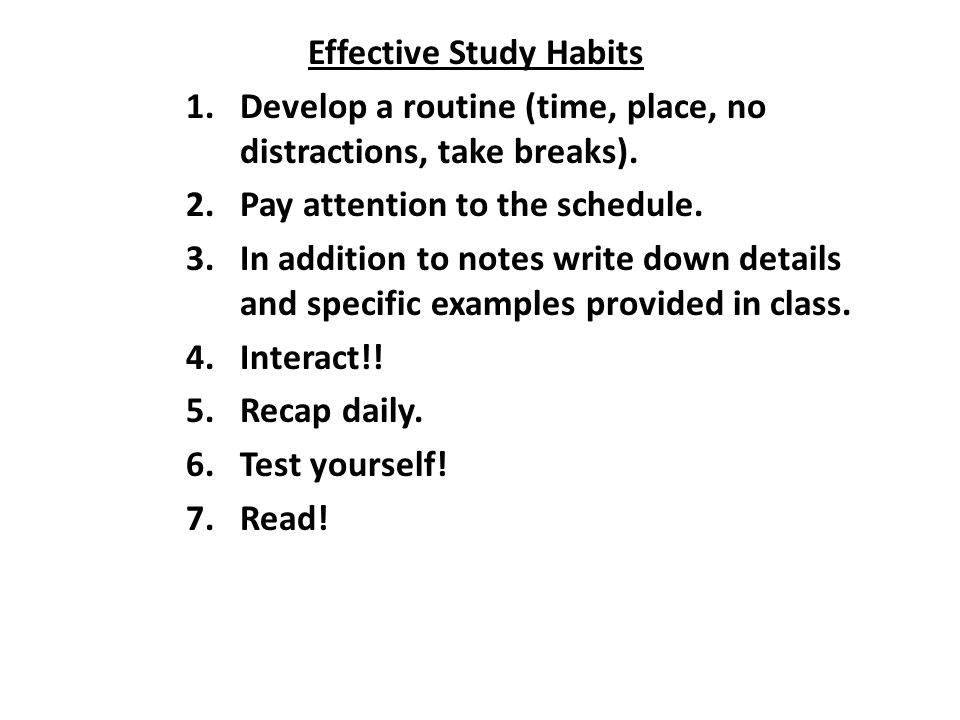
Tissue: The Living Fabric

Terms that help us understand what kinds of tissues we are identifying: Terms referring to the layers Simple = one layer Stratified = more than one layer.

Chap 4 Tissue: Living Fabric Learning Objectives: 1.Describe the 4 main tissue types. List several structural and functional characteristics of each. 2.Name,

© 2015 Pearson Education, Inc.

PowerPoint ® Lecture Slides prepared by Janice Meeking, Mount Royal College C H A P T E R Copyright © 2010 Pearson Education, Inc. 4 Tissue: The Living.

Epithelial Tissues.

Lab 1 Histology

Tissue Types Overview Tissue Definitions Epithelial Tissue

Anatomy & Physiology I Lab

Copyright © 2010 Pearson Education, Inc. Chapter 4 Tissue: The Living Fabric Part A Shilla Chakrabarty, Ph.D.

Body Tissues Tissues – Groups of cells with similar structure and function – Four primary types Epithelial tissue (epithelium) Connective tissue Muscle.

Bio & 241 A&P Unit 1 / Lecture 3. Tissues All body tissues arise from three fundamental embryonic tissues. Endoderm: forms epithelial tissues lining internal.

Types of Epithelium. © 2013 Pearson Education, Inc. Classification of Epithelia All epithelial tissues have two names – One indicates number of cell layers.

By the end of this lecture you will:

Identify the type of junction with its purpose: forms an impermeable junction; prevents molecules from passing between cells Let small molecules move directly.

Epithelia. 1.Cell: the basic structure of human cell 2.Tissue: consists of cells and intercellular substance 3.Organ: consists of different tissues which.

Chapter 4 - Tissues.

Epithelial Tissue -- General Features

Chapter 4 Body Tissues and Membranes.
About project
© 2024 SlidePlayer.com Inc. All rights reserved.
Got any suggestions?
We want to hear from you! Send us a message and help improve Slidesgo
Top searches
Trending searches

solar eclipse
25 templates

16 templates
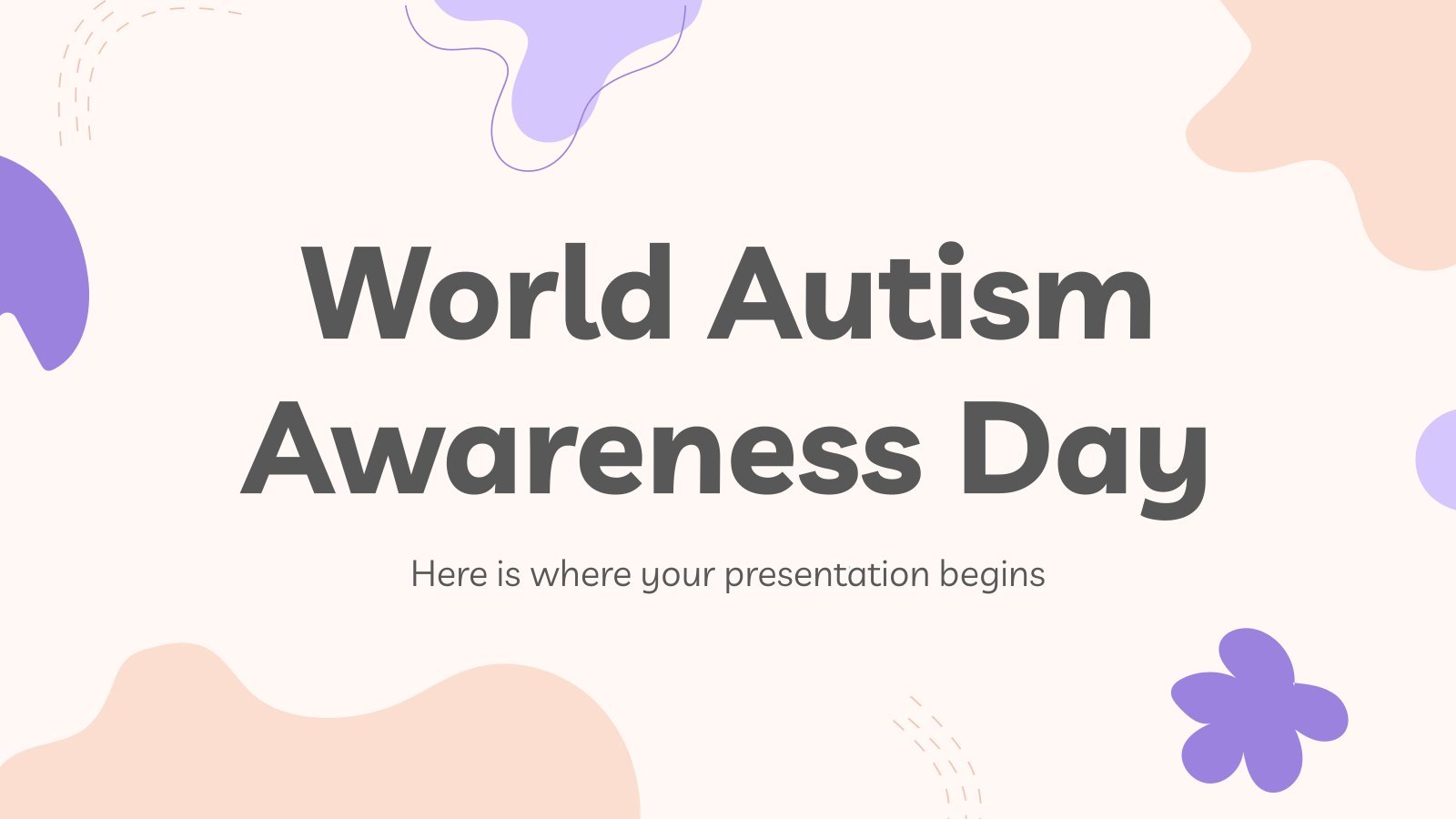
autism awareness
28 templates

12 templates

35 templates
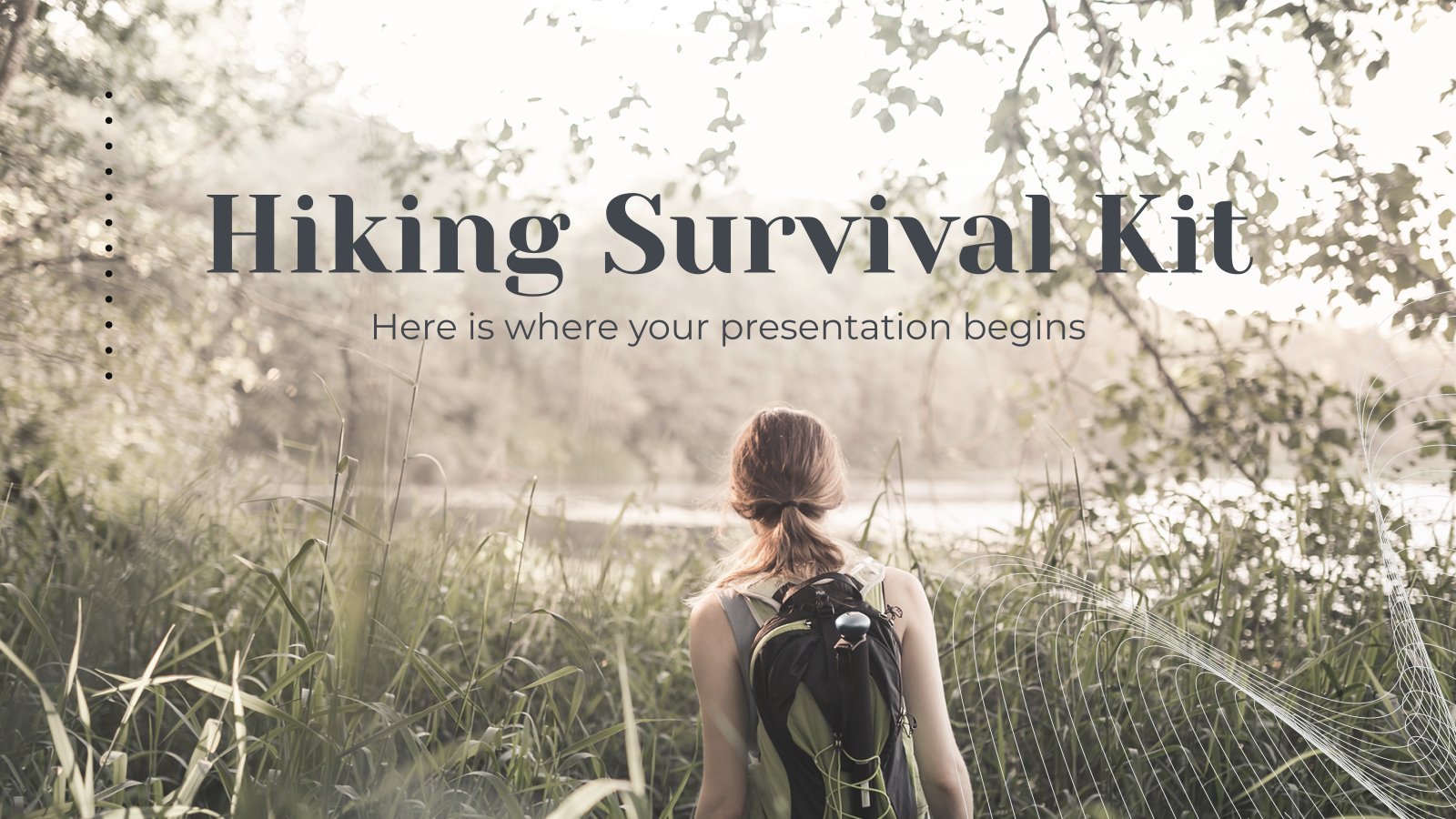
7 templates
Study Techniques
Study techniques presentation, free google slides theme and powerpoint template.
Studying sometimes seems too boring and tiresome, and standing in front of a paper doesn’t always ensure you get information into your head. These techniques are perfect for students to learn lessons better! Use this template with valuable tips ready to use in your classroom and help them make the most out of studying. Studycards, tables, mnemonic tips… Let your students know all the secrets and encourage them to try which one works best for them!
Features of this template
- Designed for Middle School
- 100% editable and easy to modify
- 17 different slides to impress your audience
- Contains easy-to-edit graphics such as graphs, maps, tables, timelines and mockups
- Includes 500+ icons and Flaticon’s extension for customizing your slides
- Designed to be used in Google Slides and Microsoft PowerPoint
- 16:9 widescreen format suitable for all types of screens
- Includes information about fonts, colors, and credits of the resources used
- Available in different languages
How can I use the template?
Am I free to use the templates?
How to attribute?
Attribution required If you are a free user, you must attribute Slidesgo by keeping the slide where the credits appear. How to attribute?
Available in, related posts on our blog.

How to Add, Duplicate, Move, Delete or Hide Slides in Google Slides

How to Change Layouts in PowerPoint

How to Change the Slide Size in Google Slides
Related presentations.
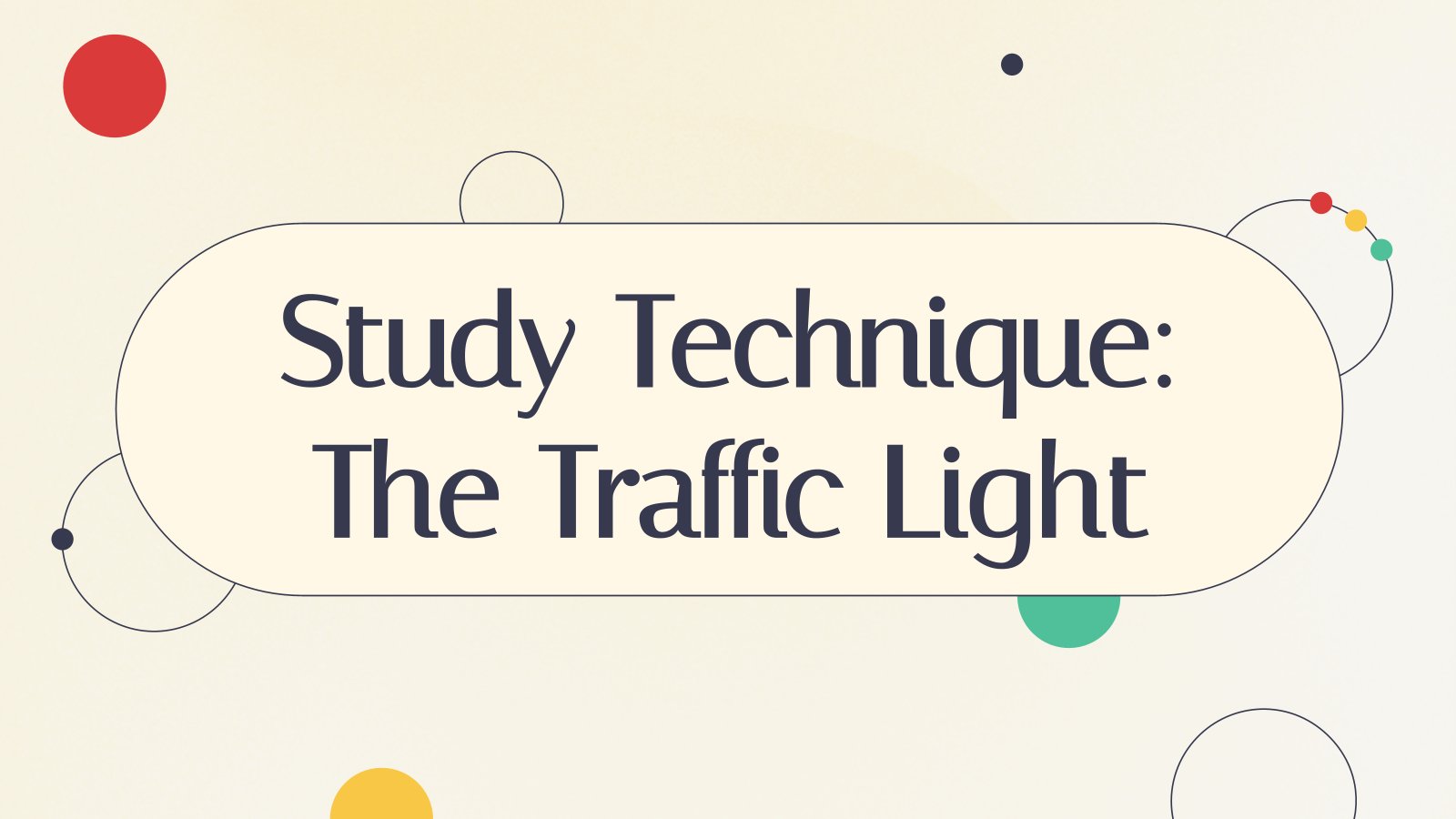
Premium template
Unlock this template and gain unlimited access
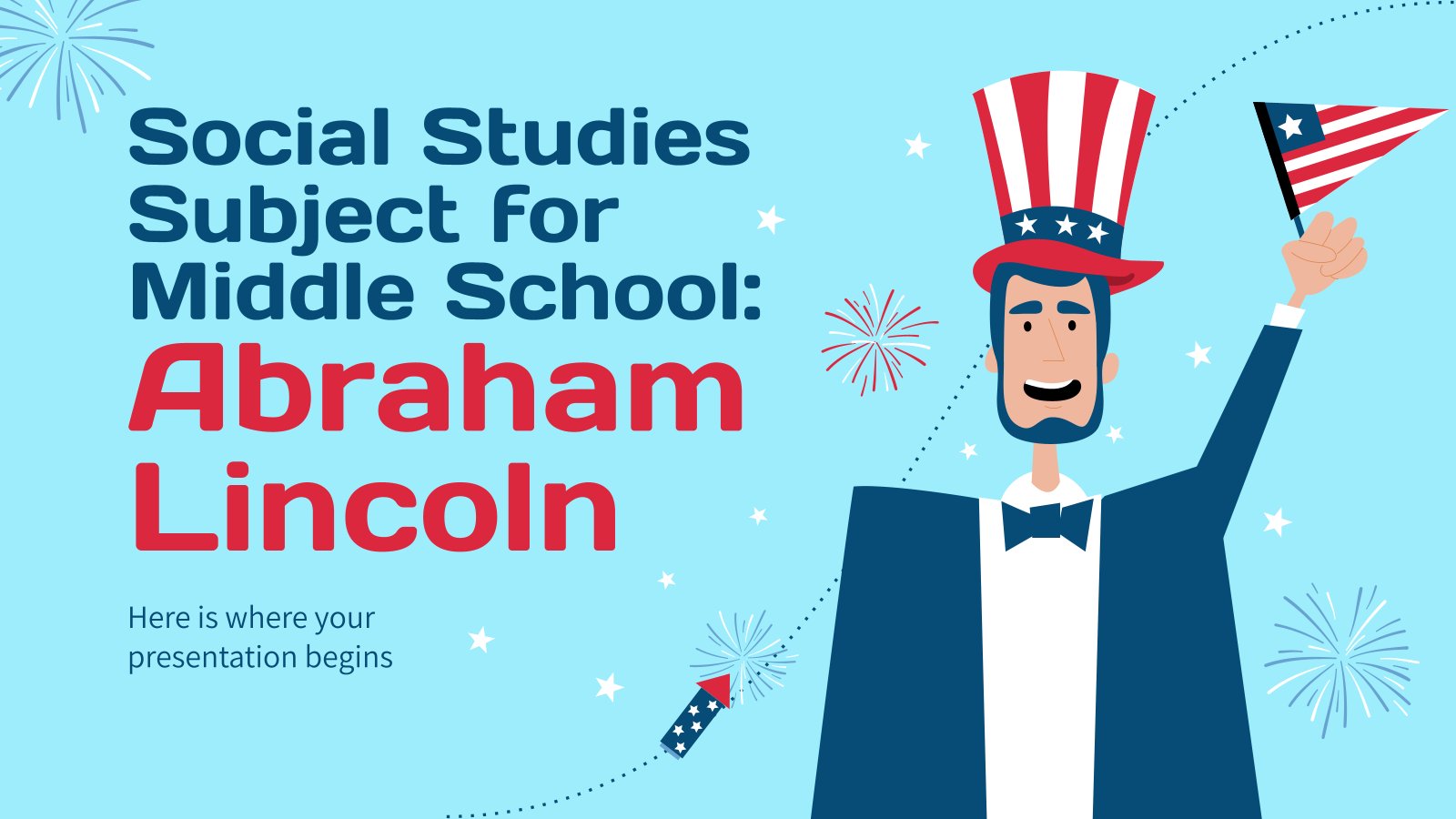
Register for free and start editing online

Study Habits
Aug 04, 2014
200 likes | 948 Views
Study Habits. By: Lindsey Marshall. The Wrong Way to Study. Many bad habits have been adapted by students Wrong habits can lead to not learning the material to the fullest. Bad Habits. Studying with Friends Too much music Last minute cramming Eating Working in your bed.
Share Presentation
- long term knowledge retention
- lindsey marshall
- quality study
- study habits

Presentation Transcript
Study Habits By: Lindsey Marshall
The Wrong Way to Study • Many bad habits have been adapted by students • Wrong habits can lead to not learning the material to the fullest
Bad Habits Studying with Friends Too much music Last minute cramming Eating Working in your bed
Studying with Friends You may lose out on quality study time by socializing Instead of large groups find ONE study-buddy, or just say no
Too much music Noise and music can interfere with the brain’s ability to comprehend new information. If music is needed find a tone that is calming and doesn’t have lyrics.
Last Minute Cramming Terrible for long term knowledge retention Can cause undue stress Study sooner, and just some of the material each night so that the night before the test its more of a review.
Eating Eating too much food during studying can disrupt retention of material Takes up time Instead of a meal, keep snacks by study area
Working in your Bed Your bed can sooth you to sleep instead of studying Sit up right at a desk
Effective Studying The most common barrier to success encountered by college students is a lack of effective techniques for studying and exam preparation.
Tips for Effective Studying • Take good Notes • Be involved • Review each day • Keep up on reading • Highlight
References http://www.cod.edu/people/faculty/fancher/STUDY.HTM http://www.bookrags.com/articles/16.html http://www.studygs.net/aspire.htm
- More by User
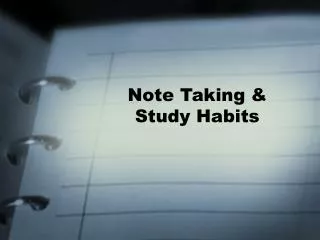
Note Taking & Study Habits
Note Taking & Study Habits. Step 1--Preparation. Come to class prepared. Do your reading before class! Color code your notes. i.e. Red=book notes Blue=In-class notes Green=Exam prep notes. Step 2—In-class note taking. Keep your head up.
254 views • 6 slides
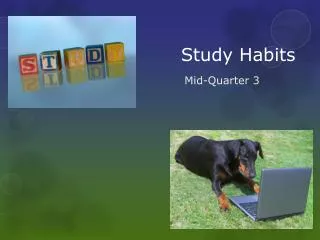
Study Habits. Mid-Quarter 3. What now?. Progress Reports Are you satisfied/happy with your grades ? What do these grades mean? The semester is ¼ over Your grade is cumulative You have three more months to go to improve? to slack?
444 views • 21 slides
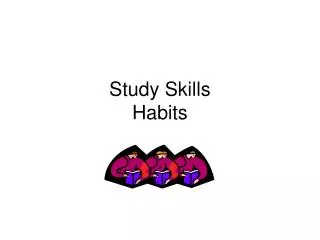
Study Skills Habits
Study Skills Habits. Effective Study Skills/Habits. a.) Keep a course notebook. b.) Clearly understand the assignment and follow instructions. c.) Keep assignments up to date. d.) Schedule a time and place to study.
521 views • 12 slides

Breaking Bad Study Habits
Breaking Bad Study Habits. A presentation by Erin Johnson and Mandy Morris. Procrastination Cramming . Stress. Irregular sleep patterns Unhealthy eating habits Increased heart rate Nervousness Fatigue Fidgeting Confusion Forgetfulness Impaired ability to problem solve Irritation
431 views • 8 slides

STUDY HABITS & SPEED READ
STUDY HABITS & SPEED READ. Grace Malek – Fall 2011. Recognizing Analogies . Choose the word that best completes each analogy. Think of the relationship between each pair of words. moon : night as sun : ________ A. fun B. day C. light D. lunch engine : car as heart : ________ A. lungs
443 views • 28 slides

687 views • 12 slides
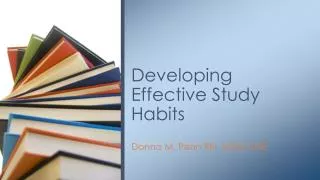
Developing Effective Study Habits
Developing Effective Study Habits. Donna M. Penn RN, MSN, CNE . Create an appropriate study environment. Limit noise Plenty of light Tidy surface Comfortable furniture No distractions Studying is a skill you must master. Discover your learning style preference. Visual Auditory Verbal
697 views • 40 slides

Creating Good Study Habits Using SQ3R
Creating Good Study Habits Using SQ3R. SQ3R. A reading strategy directly taught Develops study skills A life long skill that aids in reading comprehension. What does it mean?. What does it mean? What does it mean? What does it mean? What does it mean ? . S = Survey.
360 views • 9 slides

Effective Physics Study Habits
Effective Physics Study Habits . Dr. Nouredine Zettili Department of Physical & Earth Sciences Jacksonville State University Summer Professional Institute IMPACTSEED IX Snead State Community College Boaz, June 06—17, 2011. Abstract.
500 views • 28 slides
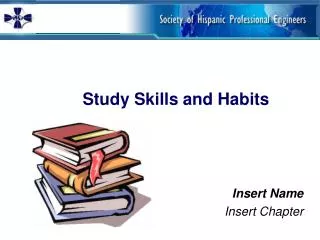
Study Skills and Habits
Study Skills and Habits. Insert Name Insert Chapter. Are You a Media Multi- Tasker ?. A recent study by the Kaiser Family Foundation referred to today's children as "media multi- taskers ," who send instant messages, talk on the phone and listen to music at the same time while doing homework.
337 views • 16 slides

STUDY HABITS DEVELOPMENT
STUDY HABITS DEVELOPMENT. In almost all college courses, if you really don’t like to read, you are in serious trouble.
547 views • 40 slides

Study Habits. Ms. Coro Intensive Reading. Tip Number One. After every 5-7 pages of reading, do 5 minutes of exercise. This can include light weight lifting, a quick jog or sprint, or push-ups/pull-ups. It keeps your blood flow and heart rate up, keeping you alert and focused. Tip Number Two.
471 views • 11 slides
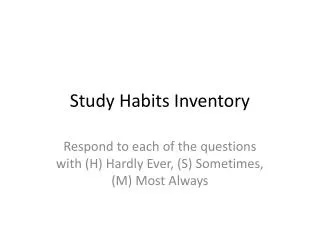
Study Habits Inventory
Study Habits Inventory. Respond to each of the questions with (H) Hardly Ever, (S) Sometimes, (M) Most Always. 1. Do you intend to study, concentrate, and learn?. 2. Do you follow a daily written schedule?. 3. Do you have a regular place to work and study?.
625 views • 40 slides
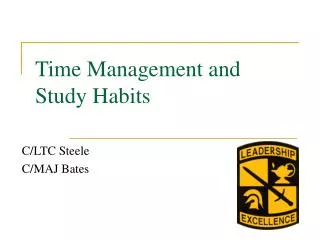
Time Management and Study Habits
Time Management and Study Habits. C/LTC Steele C/MAJ Bates. Welcome to College. Freedom & Responsibility Parents are not looking over your shoulder No constraints Parties New “friends” More parties Many new “friends”. Time Management. Personal Calendar Assignments Exams
165 views • 7 slides
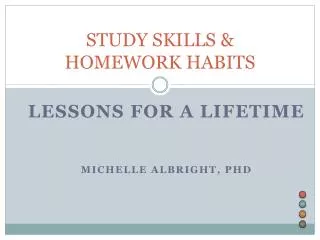
STUDY SKILLS & HOMEWORK HABITS
STUDY SKILLS & HOMEWORK HABITS. LESSONS FOR A LIFETIME MICHELLE ALBRIGHT, PHD. Think beyond finishing homework and studying for a test. Our goal is to foster social skills and healthy habits for life. How do you. Procrastinate. Focus. Walking my dogs ( Procrasti -)Baking
240 views • 12 slides

STUDY HABITS
STUDY HABITS. Review notes at least 24 hours prior to test Study when you can Between classes Work breaks Pick time of day when you are the most alert. STUDYING EFFECTIVELY. Set goals Understand material that will be on test Use time effectively Scheduling conflicts. STUDYING TOOLS.
440 views • 7 slides

Effective Study Habits
Effective Study Habits. goggle images. … for the university student. Agenda. 1. Reasons for going to school. 2. Motivators and drivers. 3. Goal setting and decision making. 4. Learning effective study habits. Introduce yourself and your academic interests
5.64k views • 44 slides
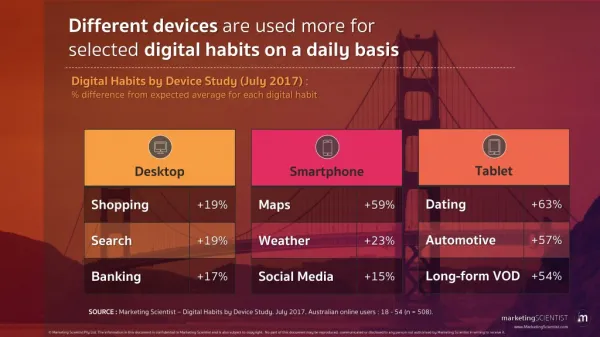
Digital Habits by Device Study
Marketing Scientist is a marketing and research consultancy delivering evidence-based strategy and actionable insight. It provides market research solutions, bespoke analysis and strategy development to help businesses make sense of their data and drive brand growth. We have worked across a range of small, medium and large organisations, with a strong focus on audience measurement, customer experience and advertising effectiveness.
28 views • 2 slides

How Students can improve Study Habits
For more information, Visit us at: http://www.shakuntalavidyalaya.edu.in/ For latest update, Visit our social media at: https://www.facebook.com/shakuntalavidyalaya/ Source: https://svschoolgroup.livejournal.com/2675.html
25 views • 2 slides

How to develop good study habits
How to develop good study habits. Being an A-level student is very different from studying at GCSE level. Although you will study a smaller number of subjects and attend fewer lessons the amount of work you will be expected to complete is far greater than that in year 11.
419 views • 15 slides
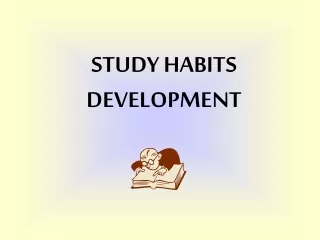
465 views • 40 slides
- Preferences

TIME MANAGEMENT and EFFECTIVE STUDY HABITS - PowerPoint PPT Presentation

TIME MANAGEMENT and EFFECTIVE STUDY HABITS
Basic element and key to time management. the basic element of time is an event. ... plan the route, hotel reservations, $, activities. ... – powerpoint ppt presentation.
- Improves productivity
- Improves quality of output
- Time Management impacts us
- psychologically as well
- (Event Success Self Esteem)
- Time Management is the cornerstone to
- success at the high school and college
- The basic element of time is AN EVENT.
- The key to managing time is CONTROLLING AN EVENT.
- Planning Time Managment is
- predetermining a sequence of events.
- Excuses for not planning
- - not enough time (too busy)
- - rather party or play golf (other priorities)
- - not useful (things change)
- - I do better under pressure anyway.
- A Natural Law We tend avoid events which are unpleasant, complex, lengthy, or uninteresting, regardless of priority. R Alec MacKenzie
- Analyze what you procrastinate about
- - keep a log and write it down
- - common patterns?
- (interpersonal, physical, confrontational)
- - are you an AM or PM person?
- Recognizing what you procrastinate
- about will signal you to begin to
- apply solutions!
- Note your common delay tactics
- What kind of excuses do you use?
- - I will do it after this show.
- - It really can wait until tomorrow.
- - I will do it this weekend.
- Recognizing these traps will help
- you avoid them!
- Experiment with solutions that work for you
- - subdivide the big task into smaller tasks
- - start with easy tasks first
- - get someone to work with you
- less difficult and painful (studymate)
- - make a commitment to someone
- - set a deadline (more difficult to put off)
- - have all information ready (articles, study guides)
- - ensure you are well rested and alert
- - close the door (block out distractions)
- Put your plan on paper
- (provides a blueprint for success)
- Take the time to plan and then implement
- Plan 1 step at a time
- -more organized and productive effort
- - Dont just start driving on a vacation!
- Plan the route, hotel reservations, , activities.
- However, take as much time to plan your life as you do a vacation or a weekend!
- How long might your educational journey be?
- Give self a carrot when you complete the task
- ie. go for ice cream, watch a ball game, etc.
- Get enough sleep. Eat right. Exercise!
- High School is a 4-year journey.
- College is a 4 (5) year journey!
- Learn to set priorities on things like goals, tasks, meeting agenda, items, interruptions.
- Start with A priorities best use of time!
- Implement anti-procrastination
- (you should know the signs and control measures)
- Subdivide large, tough tasks into small, easily accomplishable parts. (divide conquer)
- 5. Establish quiet hour requires will power.
- 6. Find a hideaway -library, etc.
- 7. Learn to say NO when you have a deadline
- 8. Minimize routine tasks - eating, washing, etc.
- Shorten low-value interruptions
- - I need someone to fail with me crowd.
- 3 options 1) reschedule 2) avoid 3) terminate
- 10. Avoid over-commitment and over-scheduling
- (Be realistic and allow some crisis/flex time)
- - Keep a log of where your time goes.
- - Analyze your key problems anticipate problems.
- - Find solutions.
- Medium Long Term Planning
- - Build actions to accomplish goals.
- - Set deadlines.
- Daily Planning
- - Develop a habit of daily planning.
- - use a planning guide, prioritized to-do list.
- - Write down what/when/how you plan to do it.
- 1. Select a distraction-free environment
- 2. Review medium and long-term goals
- 3. Review prior days Daily Task List for incomplete
- 4. Review todays prescheduled events
- 5. Review the next few days schedule to see what needs to
- be prepared
- 6. Update new tasks from yesterday
- 7. Prioritize the activities (A1, B1, B2, C1, C2)
- Budget 1-2 hrs of study time per 1 hr of class
- - WHEN IS THE BEST TIME? (college for sure,
- some of your high school classes will be less)
- Best to study before after class
- - within 24 hrs for better retention
- Take break (exercise) stimulate the brain
- Are you an AM or PM person?
- Eliminate distractions -radios, hallways
- Dont wait until the last moment (more anxiety)
- Test file on presentations, etc. Does it work?
- Study alone before the test
- Use time after school (1 hr a lot)
- instead of watching TV
- Actively take notes
- -active vs. passive listening
- -compare notes
- Learn to abbreviate (symbols)
- Write questions in margins
- Mark text books selectively, when possible,
- use sticky notes (not all yellow)
- Organize facts
- concentrate on important terms and key
- Eliminate unimportant information
- Pre-read (better understanding)
- Study partners/groups
- Ask the Instructor if unsure
- Taking tests
- - get there early
- - read all directions
- - spend most time on questions that count most
- - change answers only when certain
- - if all questions are the same value, skip the
- difficult questions and go back
- 7 Communicated Verbally
- 93 Communicated Non-Verbally
- (gestures, tone, variation, body language)
- 10 of information is retained by just
- listening no note-taking or reviewing
- 55 retained if written down not reviewed
- 75 info is retained if written down
- reviewed within 48 hrs
PowerShow.com is a leading presentation sharing website. It has millions of presentations already uploaded and available with 1,000s more being uploaded by its users every day. Whatever your area of interest, here you’ll be able to find and view presentations you’ll love and possibly download. And, best of all, it is completely free and easy to use.
You might even have a presentation you’d like to share with others. If so, just upload it to PowerShow.com. We’ll convert it to an HTML5 slideshow that includes all the media types you’ve already added: audio, video, music, pictures, animations and transition effects. Then you can share it with your target audience as well as PowerShow.com’s millions of monthly visitors. And, again, it’s all free.
About the Developers
PowerShow.com is brought to you by CrystalGraphics , the award-winning developer and market-leading publisher of rich-media enhancement products for presentations. Our product offerings include millions of PowerPoint templates, diagrams, animated 3D characters and more.


IMAGES
VIDEO
COMMENTS
A/B students typically devote 2 or more hours of study time outside of class for each hour in class. Using this formula, set some realistic study hour goals for each of your courses this semester. Total the Out-of-Class Study Commitment for all of your courses. Now track your progress using the Study Log for at least one week.
Skills that will lead them to success! This presentation template offers you the possibility to talk about study techniques or practices, such as connecting with dots, summarizing the content and other tips that you consider important. The great variety of resources and structures, such as diagrams or tables, will help you to present your ...
Effective study habits help students keep up with coursework, retain information, and perform well on exams. It's crucial to find a study technique that works best for each individual. ... Some effective strategies to consider when mastering slide-based content like PowerPoint presentations include: Previewing the entire presentation before ...
Imagine the excitement of finally unlocking the secrets to effective study planning, with a dynamic and visually captivating Google Slides and PowerPoint presentation at your fingertips. This invaluable resource brings together real-life study planning tips that not only help you to organize and manage your time efficiently, but also facilitate ...
Premium Google Slides theme and PowerPoint template. By tracking your habits and categorizing them as positive, negative or neutral, you can identify areas for improvement and plan your week more effectively. Our ready-to-print guide in A4 format, designed to promote better habits and improved time management, offers diverse schedules and ...
Here are 11 tips to improve your study habits: Find a good place to study. Minimize distractions. Take breaks. Space out your studying. Set study goals for each session. Reward yourself. Study with a group. Take practice tests.
Review the presentation at the end to ensure that the audience learned and understood the material. By following these tips, you will be able to create an effective Study Habits PowerPoint Presentation. Incorporating Visuals. When creating a PowerPoint Presentation on Study Habits, utilizing visuals is important for an effective presentation.
Free Google Slides theme and PowerPoint template. Creating a PowerPoint presentation about study habits can be a valuable resource for students looking to improve their academic performance. Here's a suggested outline for a study habits PowerPoint presentation: Powerpoint Google Slide. Education.
How to download the Study Habits template for Powerpoint. 1. On this same page, scroll down to the download block until you see the buttons. 2. Click on the button below the presentation features that says 'Download Study Habits as a Free PowerPoint template'. 3. Once done it will start downloading a .pptx file that you can edit in PowerPoint. 4.
Effective Study Habits How to get the most out of studying (part 1): Planning for success Building your success Friends & Family Writing Centre and your networks, Resources & Supports Break into groups: Add as many resources and supports that you can think of to become an effective student. Create a class list.
Effective Study Habits Introduction - Free download as Powerpoint Presentation (.ppt / .pptx), PDF File (.pdf), Text File (.txt) or view presentation slides online. Scribd is the world's largest social reading and publishing site.
Effective Study Habits - Free download as Powerpoint Presentation (.ppt / .pptx), PDF File (.pdf), Text File (.txt) or view presentation slides online. Scribd is the world's largest social reading and publishing site.
Presentation on theme: "Effective Study Habits"— Presentation transcript: 1 Effective Study Habits Develop a routine (time, place, no distractions, take breaks). Pay attention to the schedule. In addition to notes write down details and specific examples provided in class. ... PowerPoint ® Lecture Slides prepared by Janice Meeking, Mount ...
Presentation Transcript. Developing Effective Study Habits Donna M. Penn RN, MSN, CNE. Create an appropriate study environment Limit noise Plenty of light Tidy surface Comfortable furniture No distractions Studying is a skill you must master. Discover your learning style preference Visual Auditory Verbal Physical (Hands on) Logical Social Solitary.
How to develop good study habits The aim of this presentation is to help parents and students to: Understand the correct climate for studying. Recognise how time management is the key to success. Inform parents how they can support their child's learning and progress. Plan and prepare for progress.
Free Google Slides theme and PowerPoint template. Being organized while you study is a major factor to success! For example, having all your notes organized and well presented or keeping track of subjects, assignments and exams will make it easier for you to always be on time for your deadlines and take a lot of stress off your shoulders.
Free Google Slides theme and PowerPoint template. Studying sometimes seems too boring and tiresome, and standing in front of a paper doesn't always ensure you get information into your head. These techniques are perfect for students to learn lessons better! Use this template with valuable tips ready to use in your classroom and help them make ...
Presentation Transcript. Study Habits By: Lindsey Marshall. The Wrong Way to Study • Many bad habits have been adapted by students • Wrong habits can lead to not learning the material to the fullest. Bad Habits Studying with Friends Too much music Last minute cramming Eating Working in your bed.
World's Best PowerPoint Templates - CrystalGraphics offers more PowerPoint templates than anyone else in the world, with over 4 million to choose from. Winner of the Standing Ovation Award for "Best PowerPoint Templates" from Presentations Magazine. They'll give your presentations a professional, memorable appearance - the kind of sophisticated look that today's audiences expect.